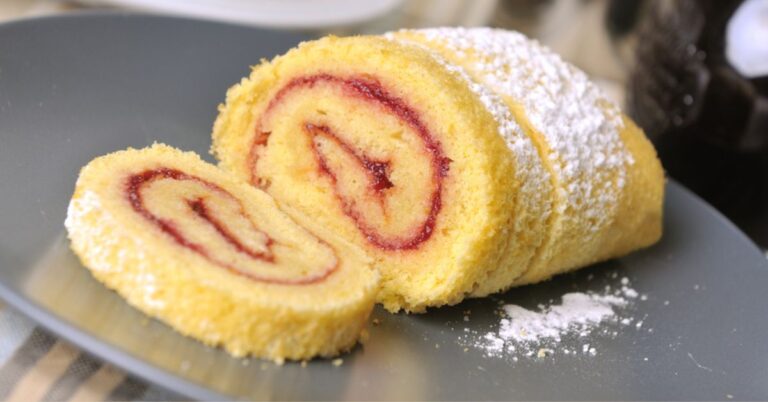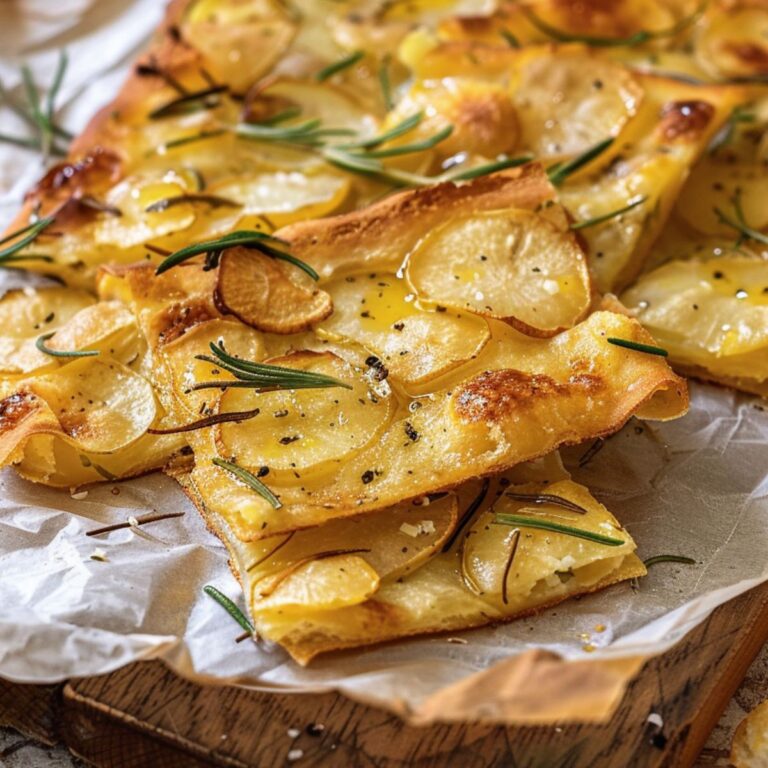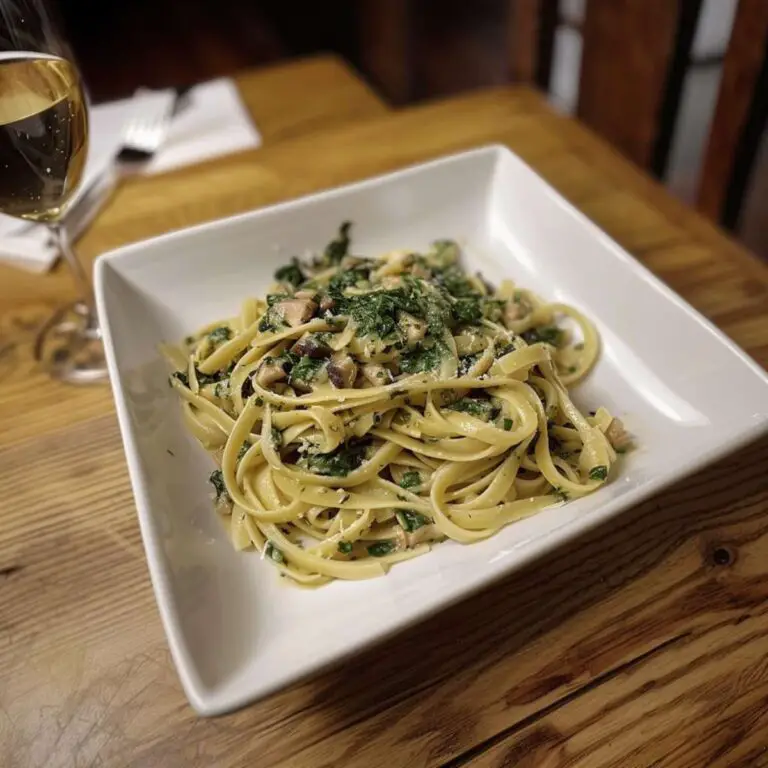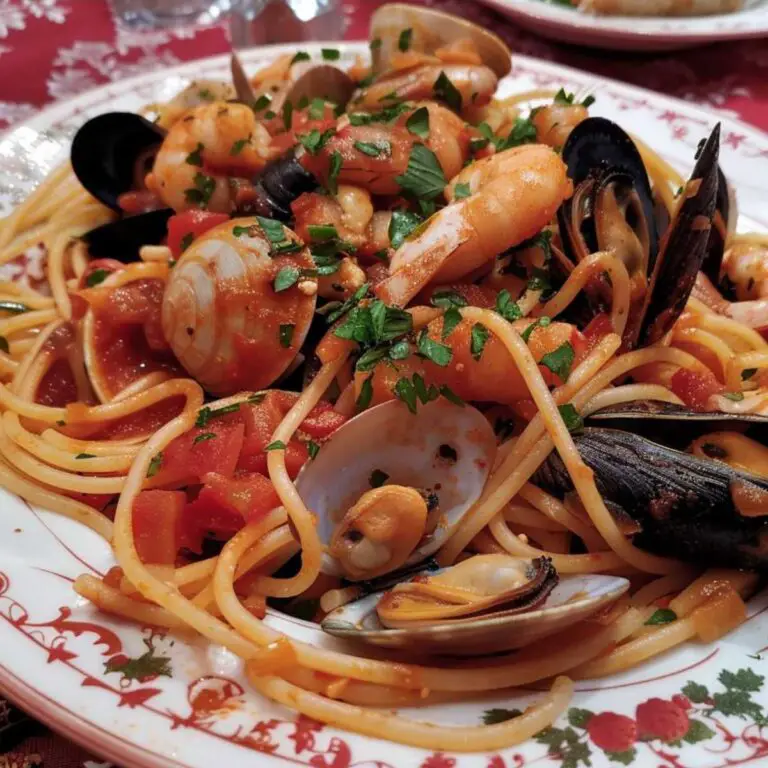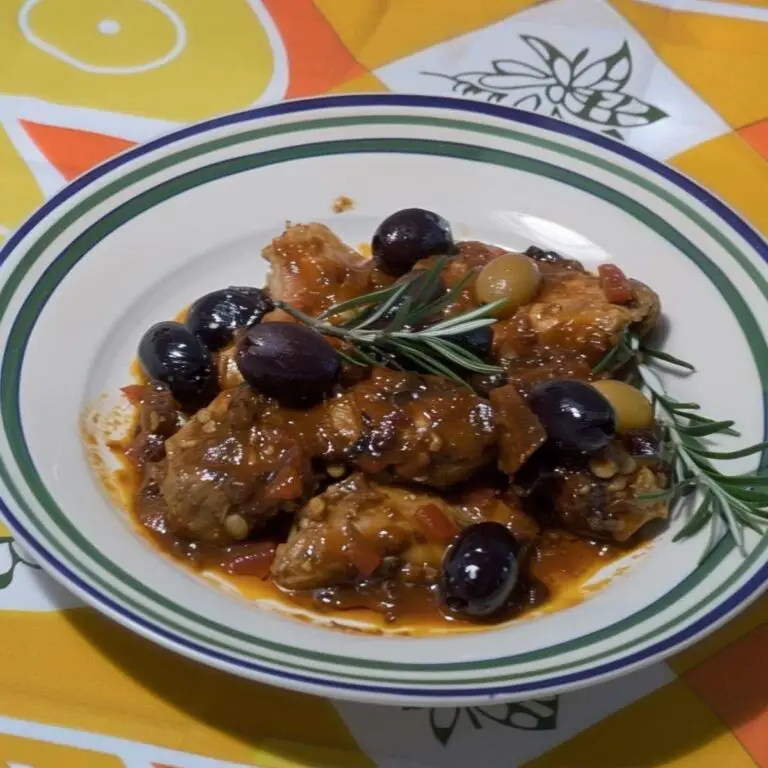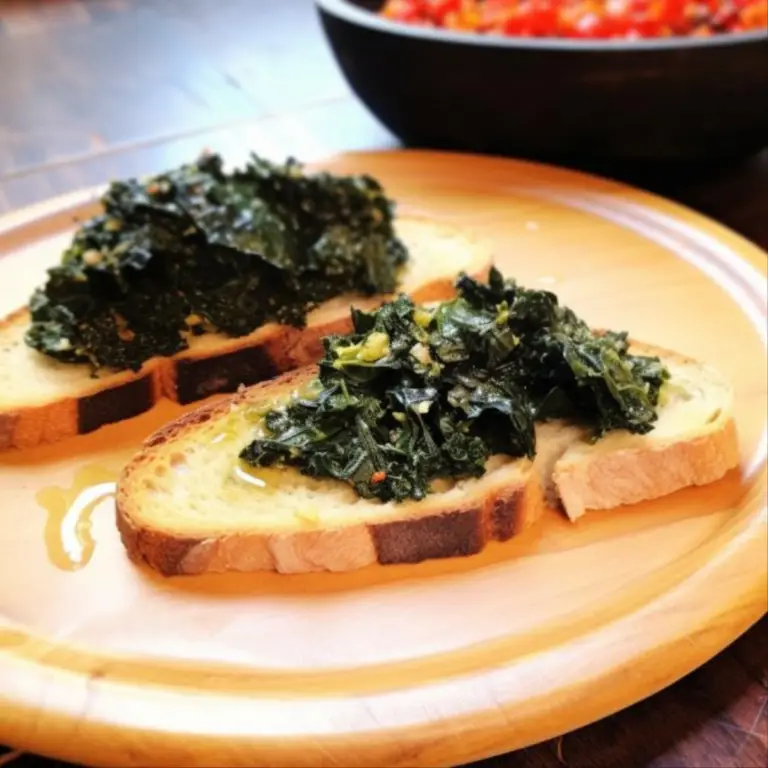Finally, one of my favorite autumn dessert recipes, and a symbol of Tuscany, Castagnaccio. Can you already smell the chestnuts in the air, the aroma of rosemary, and the scent of toasted pine nuts?
Tuscan Chestnut Cake (Castagnaccio)
Equipment
- Glass mixing bowl
- Whisk
- 8-inch cake pan
Ingredients
- 2 cups chestnut flour
- 1 ⅓ cups water
- 2 tablespoons sugar optional
- ¼ cup raisins
- ¼ cup pine nuts
- A pinch of salt
- Fresh rosemary sprigs for garnish
- Olive oil extra virgin, for the pan
Instructions
- Make the Batter: In a glass mixing bowl, whisk together 2 cups of chestnut flour, 2 tablespoons of sugar (if using), and a pinch of salt. Gradually add 1 ⅓ cups of water while continuing to whisk, ensuring the batter is smooth, thick, and free of lumps.2 cups chestnut flour, 2 tablespoons sugar, A pinch of salt, 1 ⅓ cups water
- Add Raisins and Pine Nuts: Soak the raisins in warm water for about 10 minutes to soften. Drain and squeeze out the excess water. Stir the moist raisins and ¼ cup of pine nuts into the batter. Save some pine nuts and raisins for topping the cake.¼ cup raisins, ¼ cup pine nuts
- Bake the Cake: Brush your 8-inch cake pan with olive oil. Pour the batter into the pan. Sprinkle the top with the reserved raisins, pine nuts, and a few fresh rosemary sprigs for that aromatic touch. Bake in a preheated oven at 350°F (180°C) for 30-35 minutes, or until the cake is set and slightly crisp on top.Olive oil, Fresh rosemary sprigs
- Cool and Serve: Let the cake cool down completely before slicing. Enjoy this Tuscan delight as a dessert or a snack, perhaps with a glass of red wine, embracing the essence of autumn in Italy.
Notes
A Tuscan Autumn on Your Plate: My Personal Castagnaccio Story
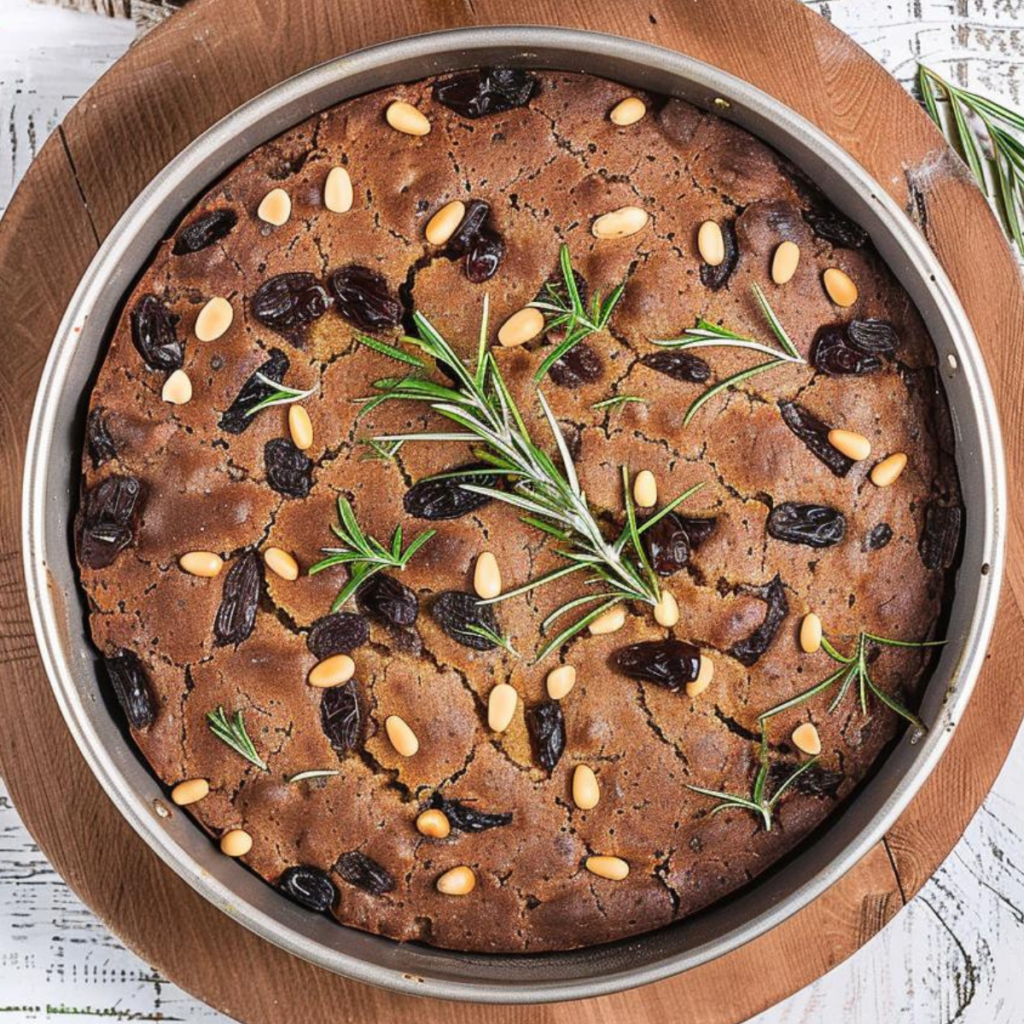
Castagnaccio is not just a cake; it’s a slice of Tuscan heritage that tells a story with every bite. As the leaves turn golden and fall to the ground, Tuscan kitchens come alive with the aroma of this chestnut delicacy.
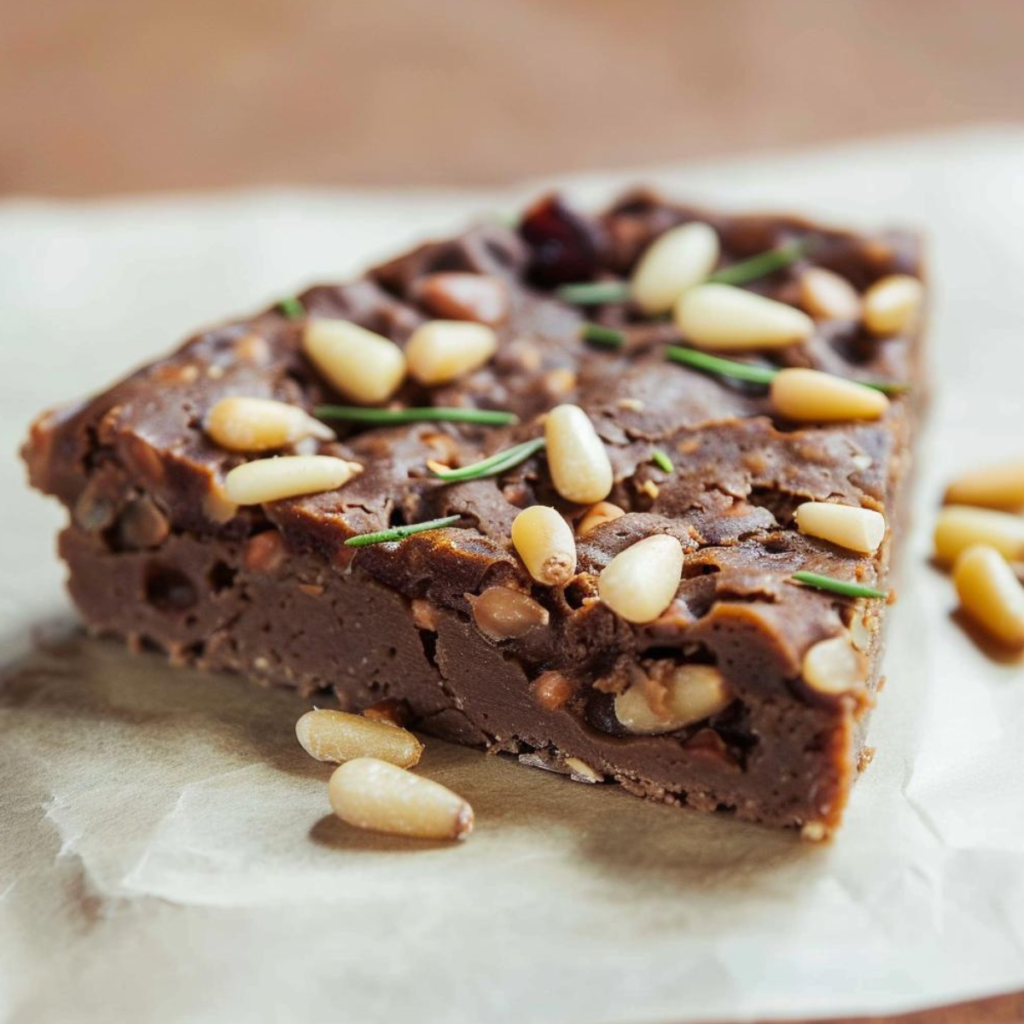
My connection to Castagnaccio runs deep— it brings back the warmth of my Nonna Iolanda’s kitchen, where love was measured in spoonfuls of chestnut flour and the happiness was found in the crackling sound of pine nuts. Each ingredient is a chapter of our Italian countryside, where chestnuts have sustained generations.
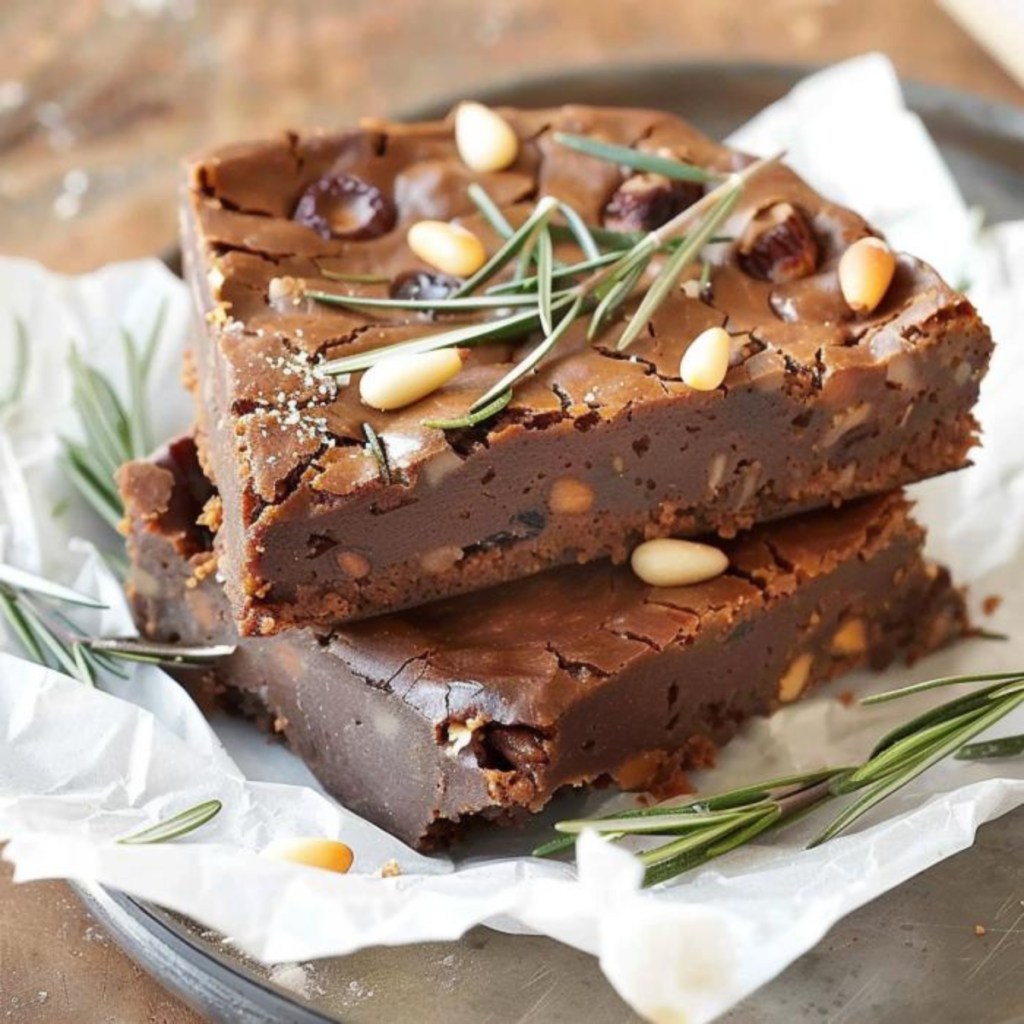
The addition of rosemary, picked from the wild bushes that dance along the Tuscan hills, marries the sweet and savory in an embrace that can only be described as culinary poetry. For those looking to explore the gastronomic richness of Lucca, visit https://whyitalians.com/lucca-food-specialties/ to discover more traditional dishes that echo the city’s history and landscape, just as the beloved Castagnaccio does.

